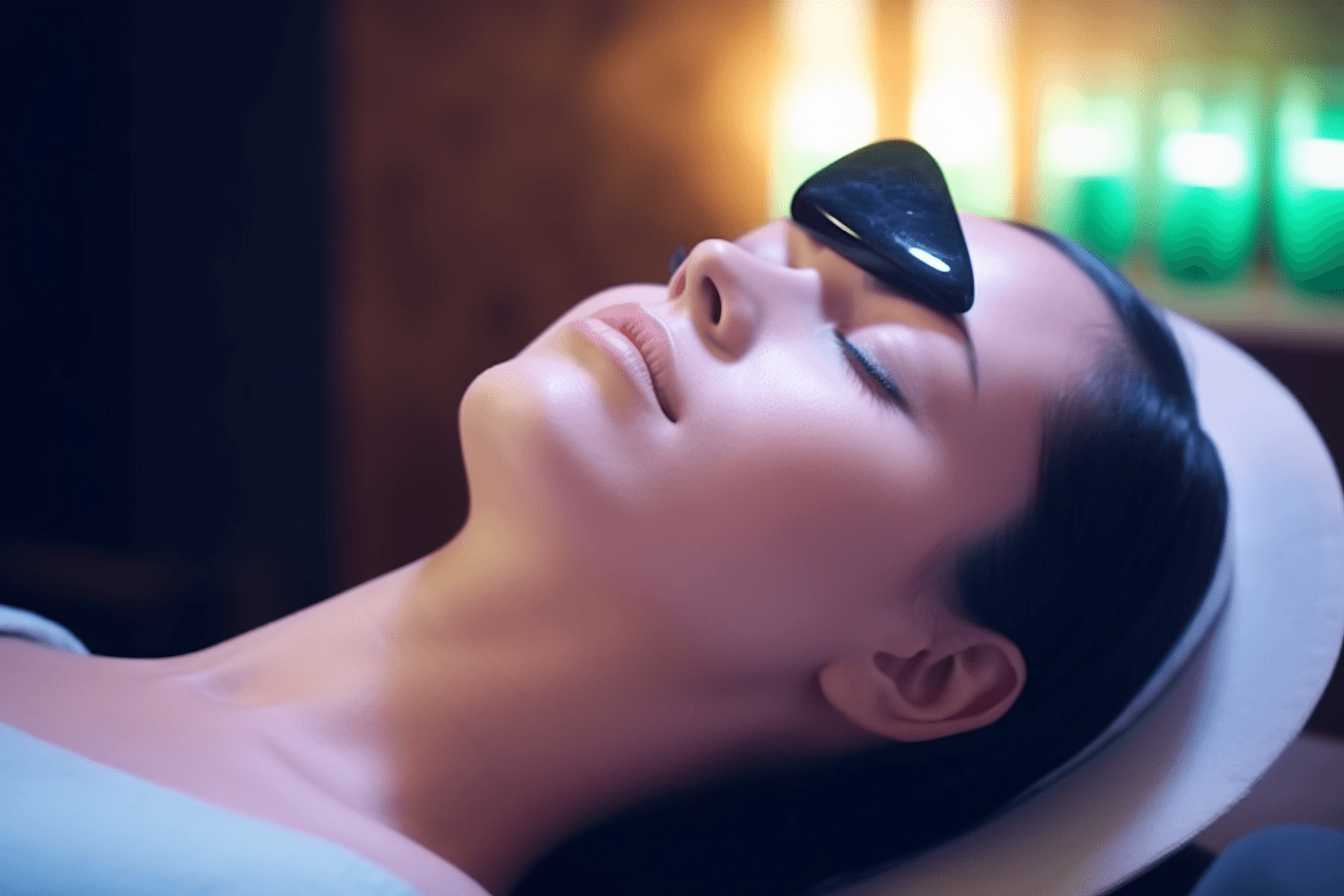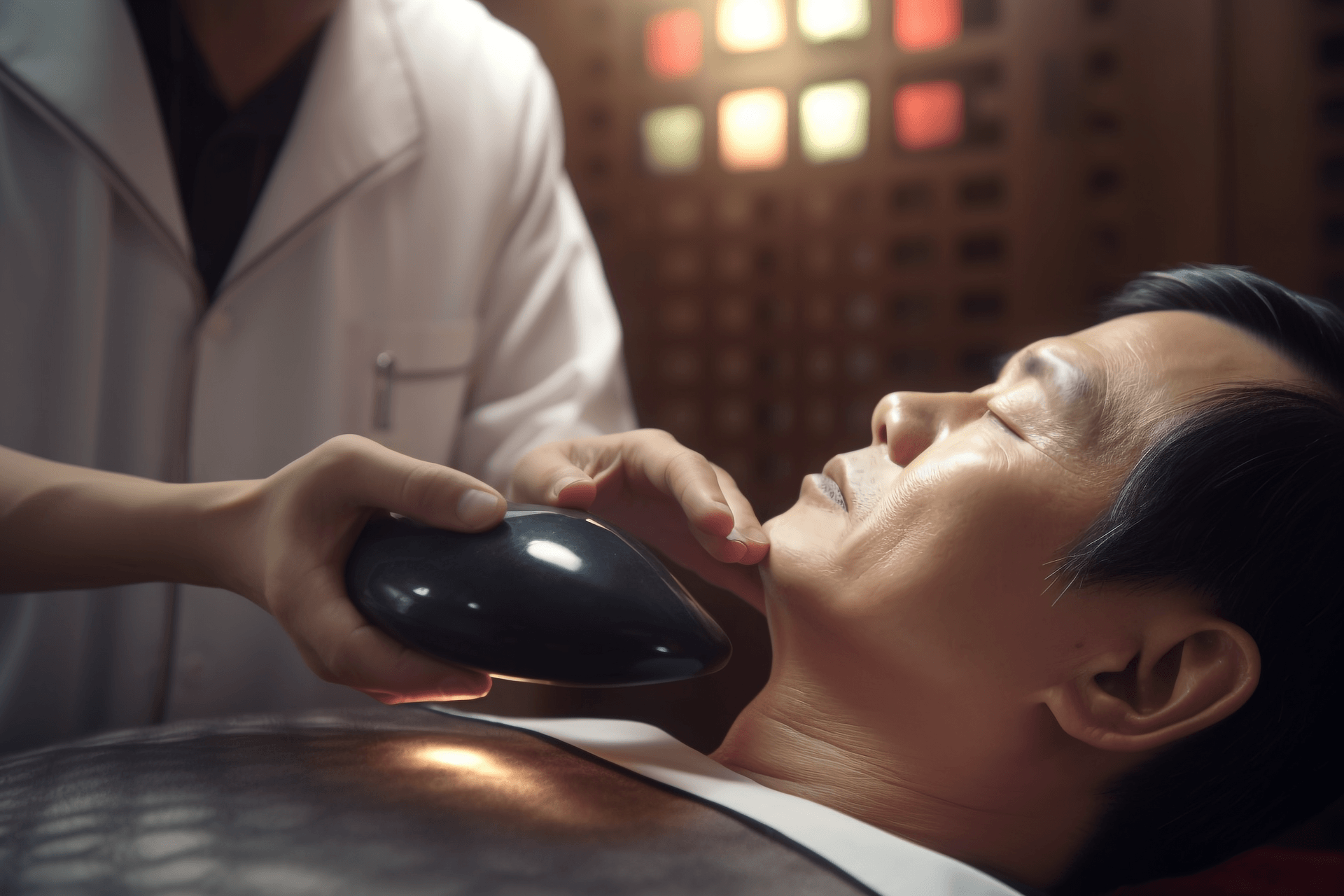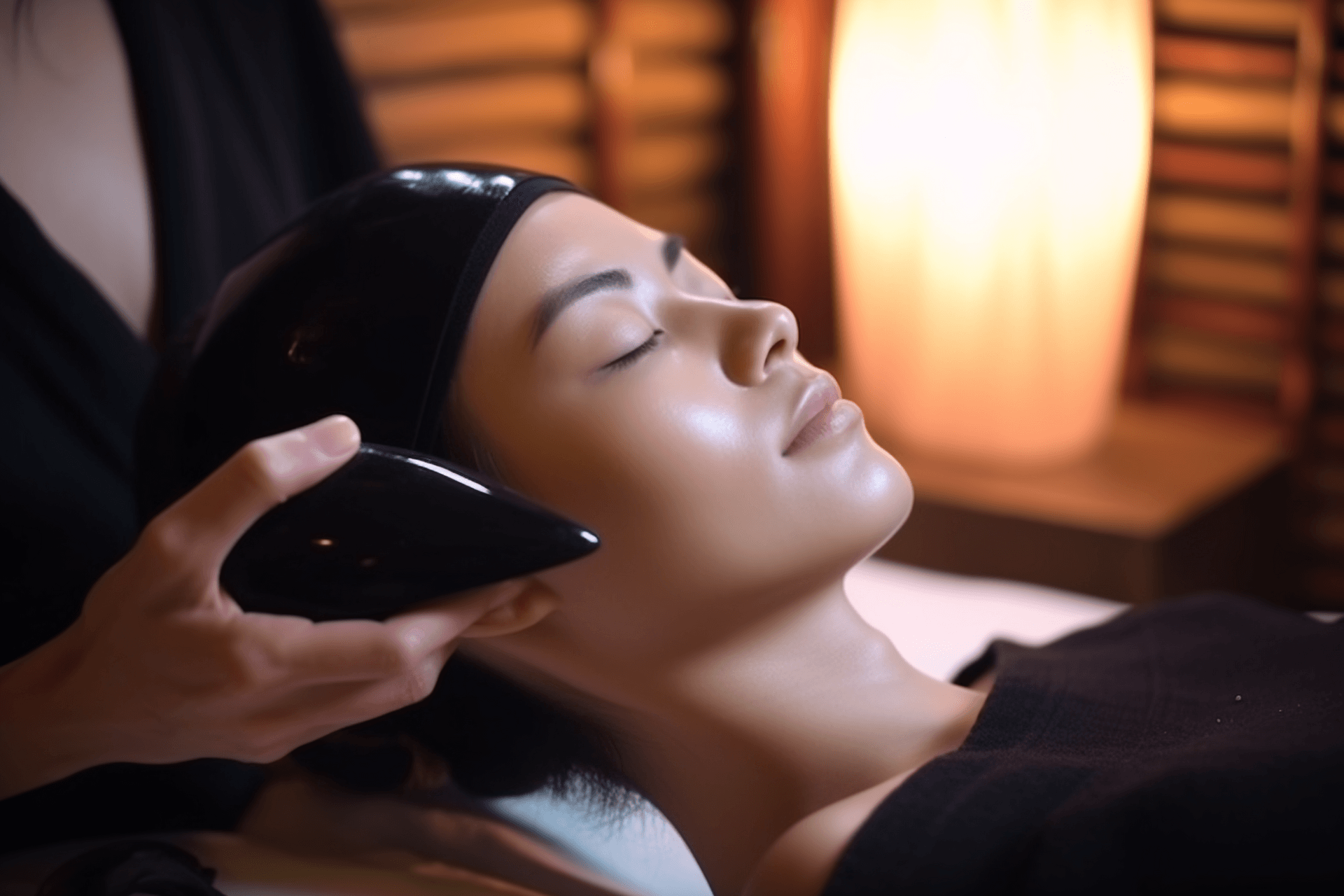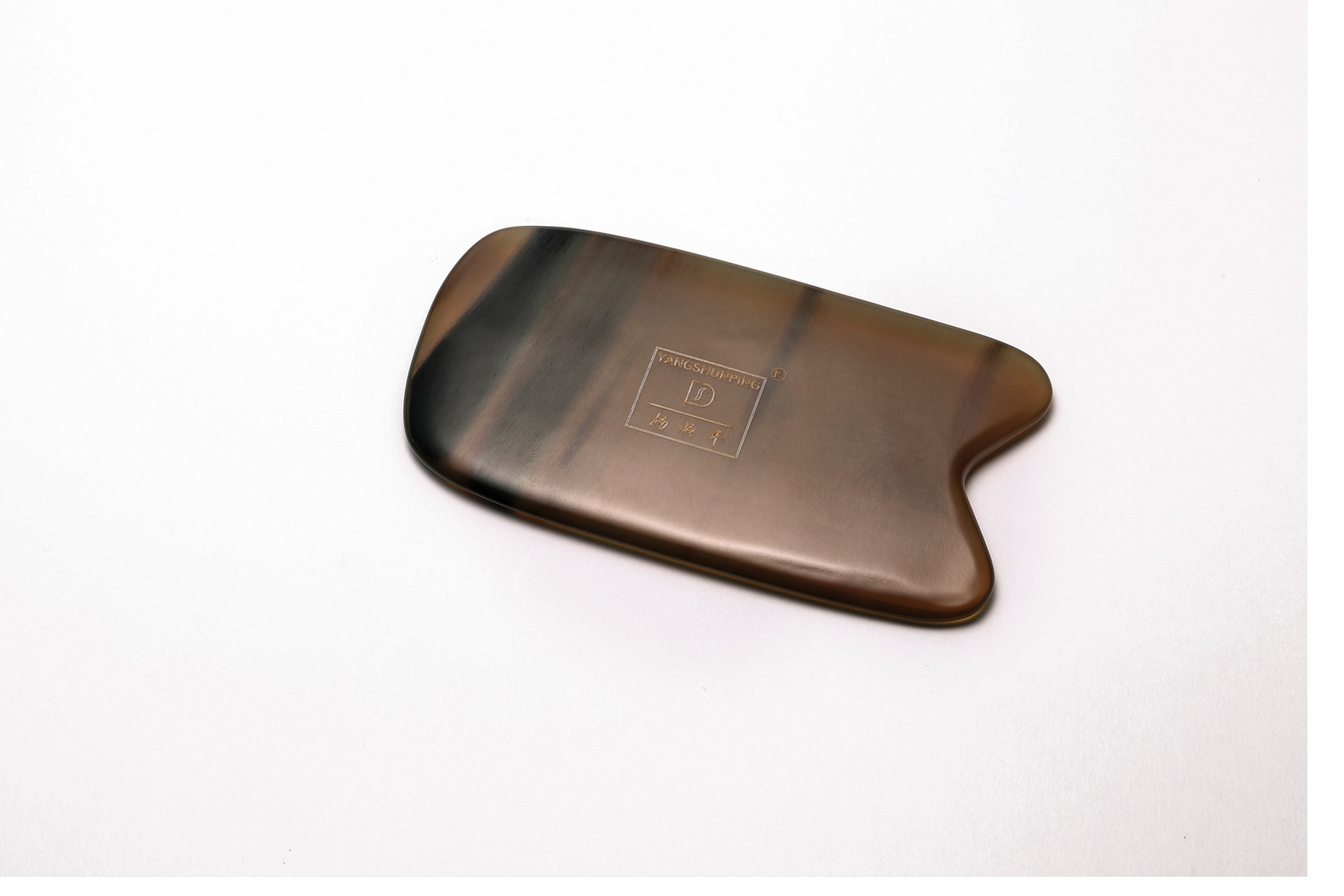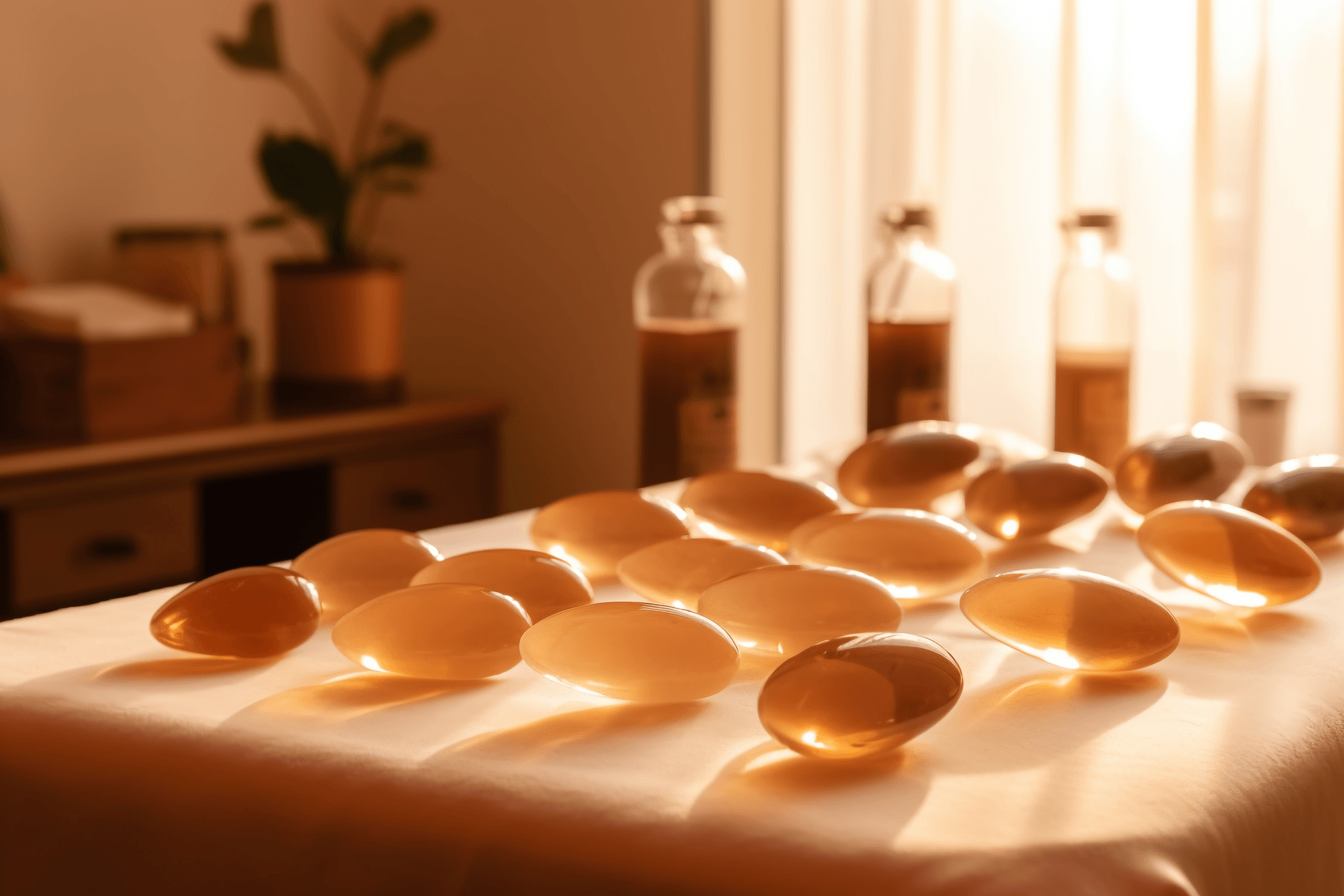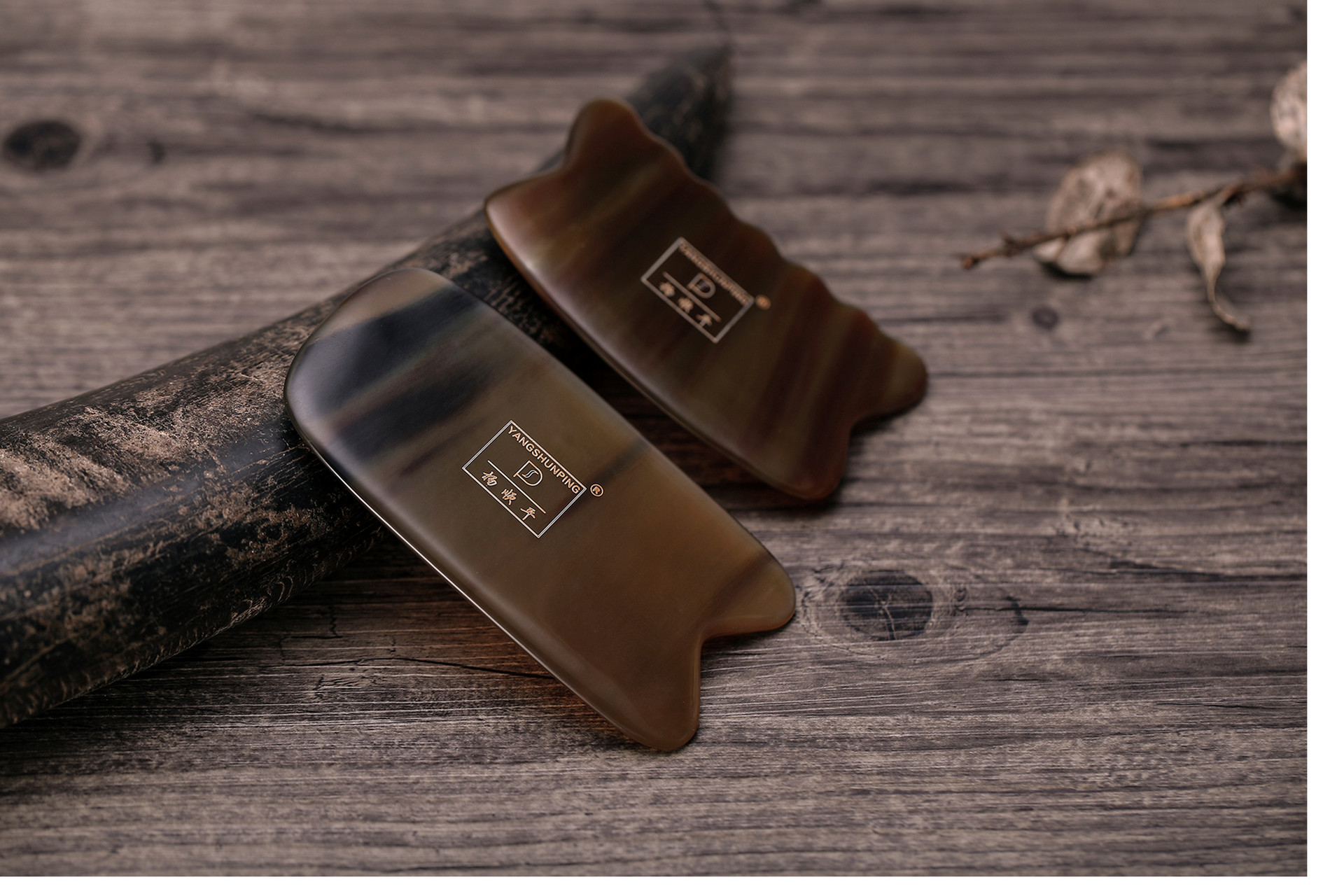Gua sha is one of the traditional natural therapies. It is based on the theory of Chinese medicine and uses gua sha tools to scrape the meridian acupoints or certain areas of the skin. Through benign stimulation, the scraped area becomes congested, improving local microcirculation. This technique can remove pathogenic factors, dispel wind and cold, clear heat and dampness, promote blood circulation, and relieve pain by activating the body's potential ability to fight disease and enhance immune function. It plays a role in supporting the body and preventing and treating diseases.
Modern science has proven that gua sha can dilate capillaries, increase sweat gland secretion, and promote blood circulation. It has immediate effects on wind-cold bi syndrome caused by conditions such as hypertension, heat stroke, and muscle soreness. Regular gua sha can help regulate the meridian qi, relieve fatigue, and enhance immune function.
Gua sha has two major effects on the body: preventive care and treatment.
Preventive care
Gua sha therapy's preventive care includes two categories: health care prevention and disease prevention. The target of gua sha therapy is the superficial skin on the body's surface, which directly contacts the external environment and adapts to external climate changes. Regular gua sha (such as scraping the back shu points and zu san li points) can enhance the body's defensive qi. A strong defensive qi protects the body from external pathogenic factors. If pathogenic factors invade the body's surface and symptoms such as aversion to cold, fever, nasal congestion, and runny nose appear, timely gua sha (such as scraping the lung shu and zhong fu points) can eliminate the pathogenic factors and prevent them from spreading to the internal organs, thus preventing serious illness.
Treatment
Gua sha therapy's therapeutic effect can be demonstrated in the following aspects:
Blood circulation and stasis removal: Gua sha can regulate muscle contraction and relaxation, adjust the pressure between tissues, and promote blood circulation around the scraped area. It increases tissue flow, thereby achieving the effects of promoting blood circulation and removing blood stasis.
Yin-yang adjustment: Gua sha has a significant effect on adjusting the balance of visceral functions. For example, using gua sha techniques on the abdomen and back can inhibit excessive intestinal peristalsis and restore normal function. On the contrary, it can promote intestinal peristalsis in individuals with reduced intestinal motility. This indicates that gua sha can improve and adjust visceral functions, balancing yin and yang.
Tendon and meridian relaxation: Soft tissues such as muscle attachments, fascia, ligaments, and joint capsules can produce pain signals. Through neural reflexes, the related tissues enter an alert state, and muscle contraction and tension occur, leading to spasms. This is the body's natural protective response to reduce limb movement and alleviate pain. If not treated promptly or thoroughly, the damaged tissues can form varying degrees of adhesion, fibrosis, or scar tissue, constantly sending harmful impulses that intensify pain, tenderness, and muscle contraction. This can create secondary pain foci in surrounding tissues, resulting in metabolic disorders and further exacerbating pathological changes characterized by "pain due to blockage".
Information adjustment: Each organ in the human body has its specific biological information (such as inherent frequencies and bioelectricity). When organs become diseased, their related biological information changes, which can affect the overall system and even the balance of the entire body's functions.
By stimulating specific areas on the body's surface through various forms of stimulation or energy transmission, specific biological information is generated. This information is transmitted to the relevant organs through the information transmission system, adjusting the abnormal biological information and thus adjusting the diseased organs. This is one of the foundations for gua sha therapy in treating diseases and promoting health. For example, stimulating the neiguan acupoint through scraping, pressing, or puncturing can adjust coronary artery circulation, prolong left ventricular ejection time, enhance myocardial contraction in patients with angina pectoris, increase cardiac output, improve ST-segment and T-wave abnormalities on electrocardiograms, increase coronary blood flow and oxygen supply, etc.
Toxin elimination: The process of gua sha (scraping the skin to induce sha) can cause local tissues to become highly congested. The stimulation of blood vessels and nerves leads to vasodilation, increased blood flow, enhanced phagocytic activity, and improved transport capacity. This accelerates the elimination of waste and toxins from the body, provides nourishment to tissue cells, purifies the blood, increases overall resistance, reduces illness, and promotes recovery.


